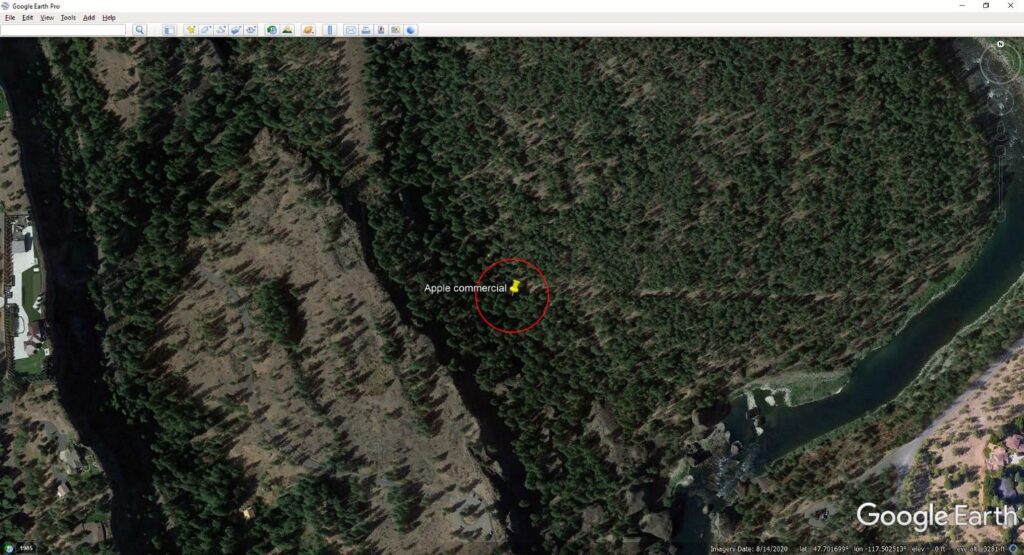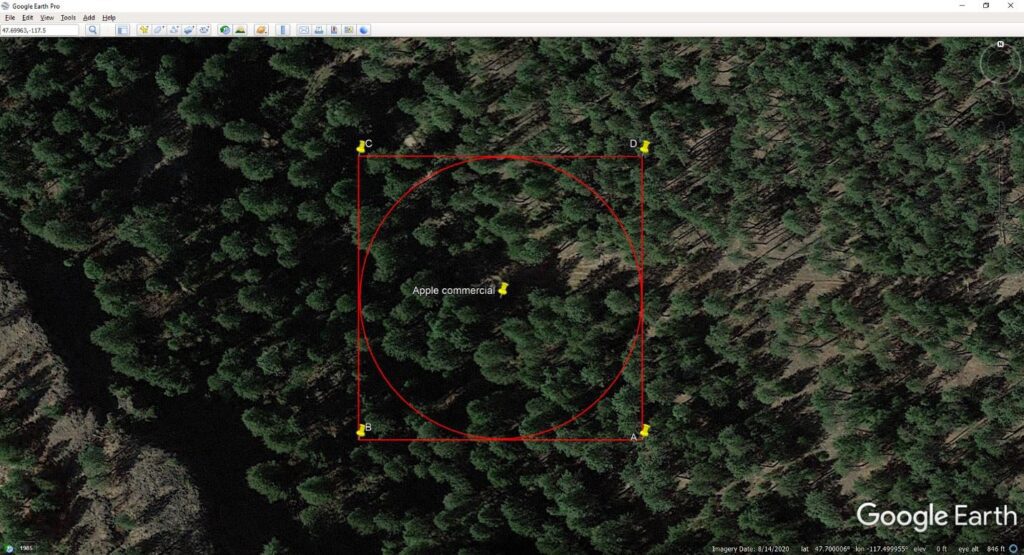The Point of the Points: GPS Coordinates- How Many Decimal Places Are Really Needed?

James R. Schmidt, Jr., BSME, Collision Reconstruction Engineering Analyst
During last year’s NFL Super Wild Card Weekend playoff games on tv, I saw an advertisement for the Apple Watch Series 7. In the commercial, there is a simulated emergency wherein someone is reported to have taken a hard fall, and not responding to their Apple watch fall detection feature. As such, an emergency call is placed by the Apple Watch, the LAT/LONG coordinates of their position are given to 1 decimal place, and it is indicated that the estimated search radius is 41 meters (which equates to 134.5 feet).
Previously I have written an article (https://forensicdjs.com/blog/gps-coordinates-many-decimal-places-need/), wherein it was explained that LAT/LONG coordinates need to be given to 6 decimal places in order to achieve an exact match to a specific point on Earth. 5 decimal places will get you very close. 4 decimal places will get you close, but not close enough to perform a speed evaluation from GPS coordinates. 3 decimal places will get you to within about 40 feet in the example I had given in that article. And, for anything less than 3 decimal places, the inaccuracy grew exponentially.
The Apple Watch commercial drew my attention because I knew that 1 decimal place on LAT/LONG coordinates wasn’t going to even remotely come close to honing in on a specific point, let alone get you within 41 meters (134.5 feet) of that point as noted in the commercial’s simulated emergency.
So, I plotted the point given in the commercial: LAT 47.7 and LONG -117.5, with a 41-meter search radius:

Then knowing (from my prior article) that it takes 3 decimal places (or more even) to get you in the vicinity of a given point, I plotted four sets of coordinates to 3 decimal places that when rounded to 1 decimal place would give you the coordinates from the Apple Watch commercial:

An extents box with an area of 31.5 square miles around the actual point of interest box was obtained. The person in the simulated emergency could be located anywhere within this box, and still have their LAT/LONG coordinates round to the 1 decimal place given in the commercial. While the person could be right at the point given in the commercial, it is just as likely that the person could be over 4 miles away from that point, perhaps never to be found. In fact, that person would be more likely to hit the Powerball many times over before ever being found based on coordinates given to 1 decimal place, and we all know how impossible it is to hit the Powerball just one time.
So, while I don’t own an Apple Watch, and I don’t know the accuracy or number of decimal places of the GPS coordinates it may actually transmit in the case of an emergency, I do know that LAT/LONG given to 1 decimal place will, for all intents and purposes, never let the person in distress be found. In fact, in this example, GPS coordinates to 5 decimal places are needed to circumscribe a square with a 269-foot side length around the circle with a search radius of 41 meters (134.5 feet) given in the commercial:
LAT: 47.7 (47.69963 to 47.70037)
LONG: -117.5 (-117.49945 to -117.50055)



